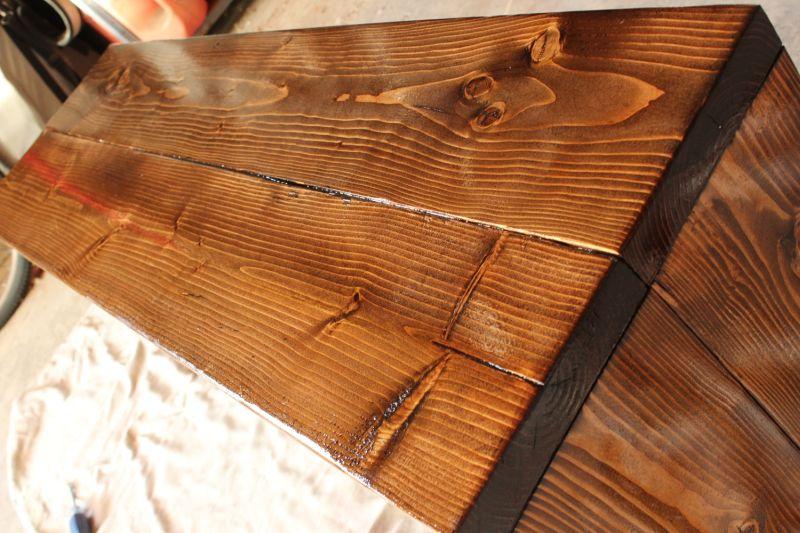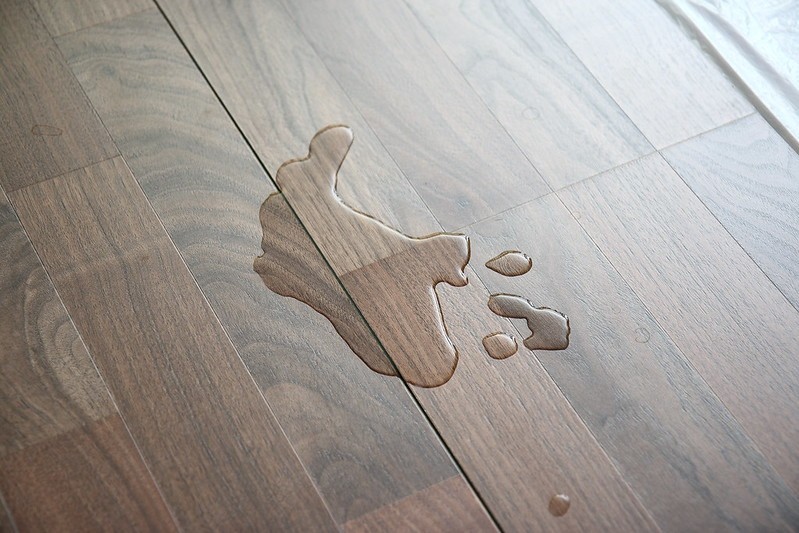Taking care of everything in your home and your yard can be quite a lot of work. But the most work is remembering everything that needs to be done. Have you thought about waterproofing your wood surfaces?

Waterproof wood isn’t natural in the home nor in the yard. So it’s important to take care of that wood and protect it so that it does not rot nor swell. Both of these can greatly affect structural integrity.
You are watching: Waterproof Wood With These Simple Methods
Thankfully, these days, waterproofing wood isn’t as difficult as it once was. You can get waterproofing materials that can waterproof your wood in one day’s time. But that isn’t the only option for waterproof wood.
Is Wood Waterproof?
It may seem silly to protect wood from water if it spends its whole life prior to being cut down around water. After all, trees are waterproof, so how is wood not waterproof? Well, cutting it down takes away its waterproof qualities.
Because wood is waterproof due to the bark protecting it as well as the life it is given. When you cut it down, these two things are taken away and it begins to decay over time unless taken care of well.
One way to take care of the wood is to waterproof it. For the good of the wood and your wallet. But why? Why does the wood need to be waterproofed? Surely water can’t do too much damage, right?
How Does Water Affect Wood?

Water can really wreak havoc on wood surfaces. It doesn’t just get the wood wet, but it penetrates the grains and causes all sorts of problems. We’ve all been told that water is one of the most dangerous things in the world.
But it’s not just humans that suffer, but also wood. There are many problems that water can cause with wood, but four primary ones. These are the most common problems that happen when wood gets wet.
- Cracks and splitting – when wood gets wet, the water causes certain parts of the wood to expand which can create large cracks in the wood. This is not only ugly but it isn’t safe either, which is reason enough to protect wood.
- Discoloration – water and sun both can discolor wood if exposed long enough. Rot can cause wood to darken and unprotected UV exposure can cause it to lighten. Swelling can also lighten wood.
- Scratches – this may seem strange but whenever the wood absorbs water, it often becomes soft and when this happens, it scratches easily. Whenever the wood dries, the scratch remains, often looking even worse.
- Mold – this may be the worst problem of all. Wet wood molds easily. Where moisture isn’t present, neither can mold be. So waterproofing wood can easily take care of any problem you’d have with mold.
Can You Waterproof Wood?

Yes, you can waterproof wood. There are a few ways to do it too. You can use linseed oil, you can seal it, or you can use special waterproofing stains if you want. These are the three methods we will go over.
Note: tung oil is an alternative to linseed oil. So if it is more readily available where you live then stick with it. You can search around to find out which of these works better for you. It’s all about availability.
The Traditional Way: Linseed Oil
This is the original way to protect wood from water. You see, linseed oil is created from the seeds of the flax plant. It was often used to protect homes from the elements and the cold in the winter before they could afford windows.
Read more : DIY Outdoor Table
Today, it can still help protect wood from water! All you have to do is apply it with a soft brush to the wood that has been cleaned well. Let the oil soak for a while before reapplying it in the same manner.
Related: Wood Varnish – Make The Ultimate Choice For Your DIY Project
You can oil as often as once a week or up to twice a year. If you don’t stain or seal your wood, then you should probably oil it every few months for best results, and even more often in the rainy seasons.
The Most-Effective Way: Sealing Wood
Sealing wood is by far the best way to protect it from water damage. Sealants are made to protect surfaces from everything from scratches to swelling, so use sealants if you can afford them to protect your wood.
The most common type of wood sealer is polyurethane sealer. Before you begin applying any sealer, clean and sand the wood. Then clean it again to get rid of any dust that sanding has created. Then you can begin.
Stir the polyurethane then use a soft brush to apply the first coat. Stick with the grain to cover the entire surface of the wood. Let the wood dry before applying further coats and lightly sanding if needed.
The Prettiest Way: Staining Wood

If you can get a stain and sealant all-in-one then do it. The stain will let you choose exactly what you want the wood to look like while the sealant will take care of protecting the wood from the elements.
If you are using it indoors, make sure that you always check the can to ensure that it can be used indoors. Some are far too strong and can only be used outdoors. There are indoor sealants, however.
You can do this in two parts as well. You can apply a stain and then use a sealer over it. This takes twice the amount of time and leaves the wood vulnerable between the two, but it is often cheaper than the two-in-one stain/sealants.
Remember To Seal
This doesn’t mean using a sealant on the wood itself but on the corners and edges. Using caulk or silicone, depending on your project, is important to prevent water that seeps inside from damaging the wood.
This is especially important in bathrooms and kitchens. You want to use silicone for these projects and carefully guide the silicone along any edges or gaps. This can do wonders for waterproofing your room.
Read more : Hay Nets for Horses: The Complete Guide
It is easy to forget but it needs to be done before you consider the room waterproof. Remember the ceiling as well as that’s where leaks often come from first and foremost. This is just as important as sealing wood.
Using Waterproof Laminate

If you don’t want to stain, seal, or even oil your wood, you can try something new that is trending today. It’s called waterproof laminate. This laminate is waterproof and doesn’t need to be sealed if used around water.
However, it should only be used indoors so if you want to use waterproof wood outdoors you’ll have to use standard wood and seal it normally. But if you’re working indoors, this may be the answer.
Waterproof Laminate Cost
Waterproof laminate is around the same cost as standard laminate. You will pay around $2 to $3 per square foot. So to cover a 1500sqft home, you will pay $3000 to $4500. That’s not too much for waterproof wood.
Since the cost of hardwood floors is $3 to $8 per square foot for materials alone, and it’s difficult to install, this is definitely worth it if having real hardwood floors isn’t important to you. Definitely worth checking out.
Waterproof Laminate Installation
Waterproof laminate installs just like any other lamiante. Most of the time, it is click and lock. So you just slide one piece onto the prior piece and it latches together before pressing down flat on the ground.
You will have to lay an underlayment just like any other laminate, which will only help with the soundproofing capabilities. If this is your first time laying laminate, have someone help you out, it’s really fairly easy.
Waterproof Laminate Durability
Waterproof laminate isn’t just waterproof, it’s also quite durable. You can actually get a guarantee that the laminate will last quite some time, depending on the guarantee you get, which includes scratch protection.
All in all, waterproof laminate is a great substitute for waterproof wood. It is half the price and it can last just as long. Not to mention, it’s so much less work to take care of than hardwood which is high maintenance.
Taking Care Of Waterproof Wood

Even after waterproofing your hardwood, you will probably need to take good care of it. Wood needs to be resealed once every three to five years. You can usually tell when the floors start to scratch or become dull.
But even in between these seals, it’s important to pay attention. Keep them clean and polish them as often as you like. Hardwood is a commitment, and so is having a wood deck, so take care of what you have.
If you don’t have time to take care of the wood, then consider hiring someone to take care of it for you or getting waterproof laminate. These are both viable options that can solve all of your problems with waterproof wood.
Source: https://gardencourte.com
Categories: Outdoor


